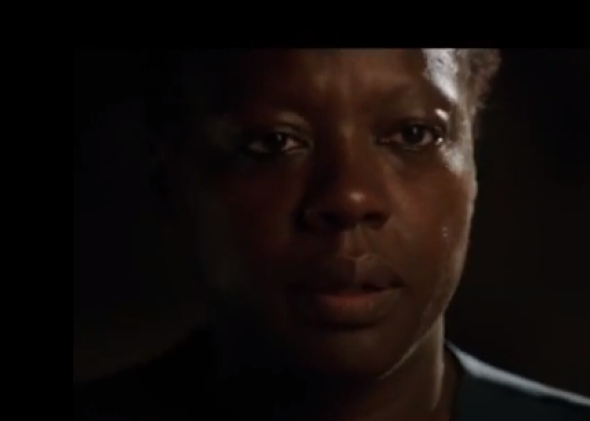As 2014 comes to a close, DoubleX is looking back on the year that was—the stories we covered and missed that captivated, puzzled, enraged, and delighted us.
It’s saying something when, in a television episode ending with the line, “Why is your penis on a dead girl’s phone?” the thing that makes the biggest headlines is the removal of a wig. That’s exactly what happened in mid-October, when Viola Davis’s character, Annalise Keating, performed a perfectly crafted, cathartic deglamorization on How to Get Away With Murder.
The Wall Street Journal deemed the reveal of Annalise’s close-cropped, natural hair from underneath a short, straight wig, “shocking.” Buzzfeed, in typical Buzzfeed fashion, broke down the moment in a series of dramatic GIFs. Damon Young, of the blog Very Smart Brothas, called her “unmasking” “one of the 10 most remarkable things I’ve ever seen on screen.”
As hesitant as I usually am to indulge in such hyperbole, the astonishment that greeted that episode was more than warranted. Seeing Annalise in such a stripped down state added layers upon layers to an elusive character who at that point had far less screen time than most of us wanted from her. “I pushed for that to happen,” Davis told the Huffington Post UK of the wig removal. “Because who Annalise is in public is a big fat lie, and we have to see her taking off the armour, which is so thick, it becomes all the more dramatic when she removes it, and you see all the pain.” And it was more than just a great artistic choice—it was a cultural one too: a striking image so rarely seen on network TV, of a black woman at her most vulnerable and real.
Annalise wasn’t the only black female character to let her hair down this year on network TV: In the Season 4 premiere of Scandal, a (temporarily) relaxed Olivia Pope (Kerry Washington) took a break from her hair relaxer while living on a secluded island with her boyfriend. It didn’t last long; as soon as she returned to “handle” things in Washington, D.C., her hair was back to straight. But for those few brief moments, it was refreshing to see a major black character with hair that looked like mine.
And the new show Black-ish took up the issue of natural black hair more directly, both on and off screen. In a recent episode, the contentious relationship between Rainbow (Tracee Ellis Ross) and her mother-in-law Ruby (Jenifer Lewis) came to a head when Ruby styled her granddaughter’s hair in an Afro without Rainbow’s permission. While the disagreement has more to do with Ruby not trusting Rainbow’s parenting skills than it does any sort of grand statement about being proud of natural hair, it was just one of many moments from Black-ish that has felt candid, and true to many black women’s experiences. And in a piece for Entertainment Weekly, Ross recently wrote: “I’m very conscious of how I wear my hair on the show, and yet it’s the way I wear my hair as Tracee. You hire me, you hire my hair and you hire my ass. It’s all coming with me.”
Ross’ statement is incredibly important. It’s important because it’s 2014, and it’s still a (pleasant) surprise when black women find success as leads in major network series. Because it’s 2014, and the recent Sony leaks have confirmed what many people of color have suspected all along: That for all the strides made in visibility on screen, too many of the folks calling the shots in Hollywood still subscribe to inherently racist notions. And because it’s 2014, and this year, the New York Times decided to publish a tone-deaf and misinformed piece in which an “older, darker-skinned” Viola Davis is declared “less classically beautiful” in comparison to her peers.
More diversity in TV is great, but it won’t amount to much if there isn’t a commitment to presenting a wide range of images within that lineup. Showing off a natural hairdo is only a small step towards greater inclusion, but it’s a good start.
